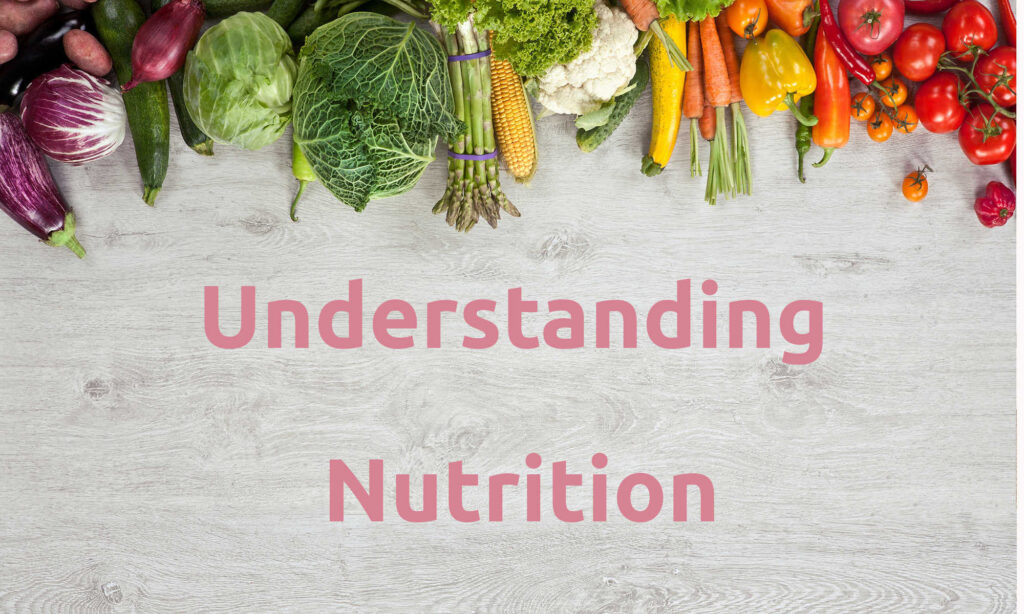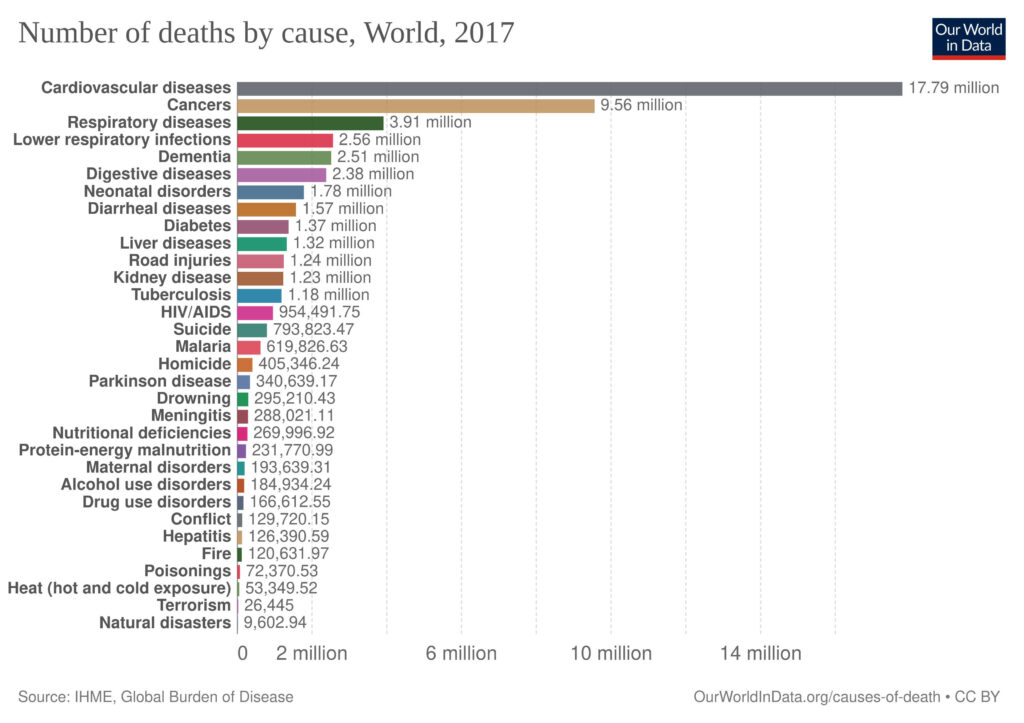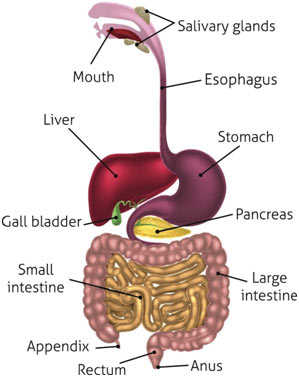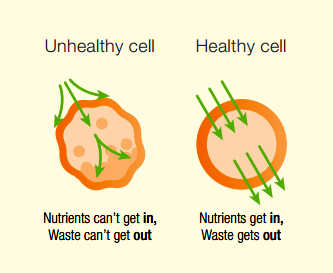
Chronic diseases (also known as non-communicable diseases or NCDs) are killing more people annually than any other cause. In fact, if we look at the chart below we can see that NDCs (cardiovascular disease, cancer, respiratory diseases, dementia, diabetes, etc.) killed 38 million people out of a total of 53 million in 2017 (the latest year for which I can find accurate data). That’s over 70% of all deaths!

The important thing is that NCDs are all caused by lifestyle choices, like poor diet, lack of exercise and substance abuse (e.g. smoking or excess alcohol use). We cannot catch them from someone else! Health authorities agree that poor diet is the main culprit.1 We are literally eating ourselves to death! In most countries around the world obesity is reaching epidemic proportions. In fact, in South Africa it is estimated that 70% of all women are overweight, with a very high proportion being obese! Sadly, men are not much better and our children are catching up fast.
So eating a healthy diet is vitally important to our long term health. We have probably all heard this before, so how come we don’t take notice? I think part of the problem is that many of us don’t really have an understanding of the difference between diet and nutrition. Diet is what we eat, nutrition is what actually gets into our cells. This is very important, because until we understand this, we probably won’t change the way we eat.
Our bodies are made up of trillions of cells, some estimate ±73 trillion of them (how they counted them I have no idea!!). The cells are where everything happens: energy, enzymes, hormones, etc. are produced, signals are sent to activate the immune system, initiate healing mechanisms, and so on. Think of cells as factories that produce whatever the body needs to operate and nutrients as the raw materials the factories use. Then there are the waste products produced in the process that need to be excreted. We can now start to see how important it is that what we eat, our diet, has to be able to supply the cells with the correct nutrients. A poor diet will provide too few or poor quality nutrients, resulting in poor cellular performance. We see this clearly in the fact that the most common complaint doctors get is “I’m tired!”

To understand this process, we need to understand how our digestive systems work. When we take a mouthful of food, our saliva starts the process of digesting that food. If we don’t chew the food adequately, that process is short changed, which negatively affects the rest of the digestion phases. Once swallowed that mouthful goes to the stomach, where the acid there further breaks down the food, especially proteins, and any bacteria are neutralized. If our stomach acid is insufficient, the food isn’t broken down properly, again causing a breakdown of the subsequent processes. As we get older, we produce less acid. A common result is a build up of gas, which can push partly digested food, and stomach acid, back up the oesophagus – resulting in heartburn or indigestion. Taking an antacid will only make the problem worse and stop the stomach acid from properly breaking the food down. The correct solution is to increase the stomach acid, not neutralize it!
From the stomach the food moves into the intestines where it is further broken down until the basic nutrients can be absorbed into the bloodstream. The nutrients are then transported throughout the body to the cells where they are utilized to produce whatever the body needs. In the intestines much of the work is done by the bacteria there. We have more bacteria in our gut that we have cells in our body, an estimated kilogram of them. Most are beneficial to our well-being, but if our diet is poor the bad bacteria can multiply and overwhelm the good ones, leading to poor health. Amazingly, about 70% of our immune system originates here, so it becomes very obvious that having healthy gut bacteria (microbiome) is crucial to good health. Modern diets loaded with refined carbs, sugars and chemicals play havoc with our microbiome.
Next, lipids and sterols are required in order for the nutrients to be assimilated into the cells. They are mainly found in the oils in the husks and hulls of whole grains, which are removed in our modern milling processes. For example, you can buy any wheat product, flour, pasta, couscous, cookies, etc. and there will be no wheat germ oil present. These lipids and sterols are essential for the health of the cell walls, or membranes, which allow nutrients into the cells and waste products out. The following diagram give us a clear explanation of how it works.

When the cell membranes are well supplied with these lipids and sterols they are soft, flexible and permeable. Nutrients easily enter and the waste products are excreted. Without them the opposite happens, resulting in sub-optimum cell functioning.
From all the above, it’s obvious that the quality, in terms of nutrient density, of the food we eat is crucial to our long term health. A diet high in junk foods, refined carbs, chemicals (preservatives, colourants, flavourants, medications, etc.), bad fats and sugar will result in ill health eventually. Without the correct raw materials (nutrients) it’s impossible for the body to keep repairing and renewing the cells and the end result is NCDs, pain and suffering. The good news is that we can change our health by changing our diet. Science is increasingly showing us that, by making simple lifestyle choices, we can help prevent NCDs, increase vitality and even live longer! It’s simply a matter of getting the correct information and choosing to do so.
In future blogs we’ll take a more in depth look at this and other factors that will impact our health, our quality of life and our lifespan. It is, I think, a subject worth studying. After all, we only have one life, we may as well enjoy it and not spend our remaining years sick and tired.
For more health info go to Health News
2 Replies to “Understanding Nutrition – Part 1”